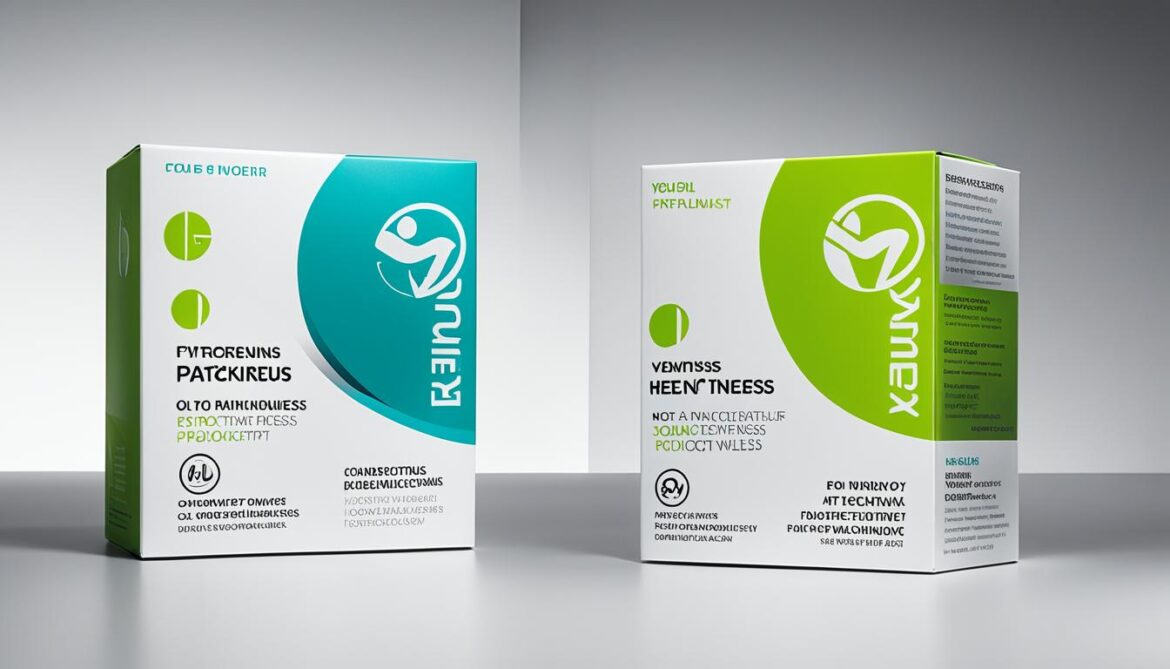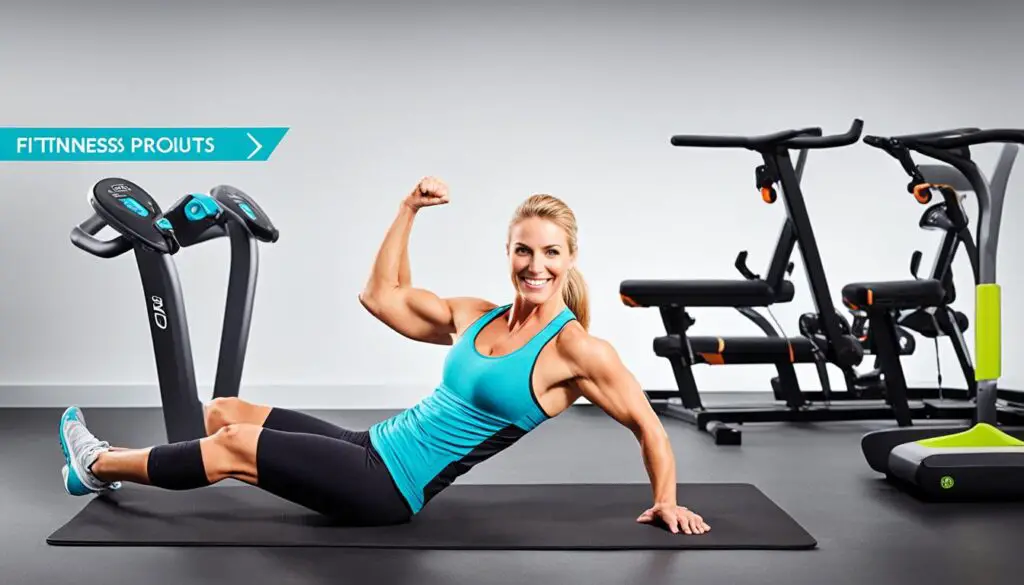In today’s market, packaging design is key. Did you know, seven in 10 customers pick a product based on its packaging? This highlights the need to perfect your fitness product’s look. You’ll want to create a packaging design plan. It has 11 steps, beginning with your goals, who you’re selling to, and your brand’s style.
Decide what kind of packaging you need. It might be outer boxes, inside wrappings, or the product cover. Each type serves a different purpose. For example, retail boxes must look good on shelves and be strong. Online packages need to withstand travel and show off important details for internet buyers.
To design well, do your homework. Look into what customers want, what other brands are doing, and where the market is heading. Test different models and keep improving. User feedback is gold. Make sure real people like your design before you’re done.
Key Takeaways:
- Design your fitness product packaging to effectively influence customers.
- Follow a well-organized packaging design process with 11 essential steps.
- Consider the type of packaging and sales channel to tailor the design.
- Conduct thorough market research and concept development.
- Prototype and user test to refine your packaging design.
Key Trends in Fitness Product Packaging
Fitness products are booming thanks to the health and wellness trend. Brands must keep up with changing market trends to create appealing packaging. This helps products catch the eye and meet customer needs in a crowded market.
Fitness Product Development and Market Demand
Fitness product development responds to what customers want and what’s popular. People are more health-conscious now, which boosts the demand for fitness items. There’s a wide range of products to fit everyone’s different needs and tastes.
Now, there’s everything from fitness trackers to personalized gym machines. These items help people focus on health wherever they are, not just at a gym.
Behavioral Psychology and Habit Formation
Great fitness products aren’t just functional; they also tap into how we think and form habits. By knowing what makes people stick to using a product, developers can make items that last. This keeps people coming back, which is great for their health.
Data from gadgets and feedback can help make products personal. It improves the user’s experience, making it more likely they’ll keep using the product.
Ergonomics, Sustainability, and Differentiation
How a fitness product is designed and how easy it is to use matter a lot in the packaging. It’s about comfort and practicality. A package that’s easy to open and use adds to the good feeling about the brand.
Being sustainable is also becoming a must for fitness companies. Consumers like to see products made with care for the planet. This means using green materials and production methods that respect the environment.
Standing out means having something special. It could be a unique design, new technology, or a special function. Being different is key to being noticed and chosen over the competition.
The image above shows why ergonomics and user experience are vital in making fitness products.
| Trends | Implications for Packaging |
|---|---|
| Market Demand and Trends | Align packaging with consumer preferences and market needs. |
| Behavioral Psychology and Habit Formation | Create packaging that reinforces positive habits and encourages consistent use. |
| Data-driven Insights | Personalize packaging recommendations based on user data for enhanced experiences. |
| Ergonomics and User Experience | Design packaging with user comfort and functionality in mind. |
| Sustainability and Ethical Practices | Utilize eco-friendly materials and communicate ethical manufacturing processes. |
| Innovative Features and Differentiation | Create packaging that highlights unique design elements and advanced technologies. |
The table above gives a quick look at trends in fitness product packaging and what they mean for packaging design.
Generating Innovative Fitness Product Ideas
To create groundbreaking fitness product ideas, focus on what the user needs. Start by learning about what your users want. Use market studies and surveys to understand their desires. This way, you can make products that fit what they need.
Technology is key for new ideas in fitness. Including the latest tech in your products can make them better. For example, use wearables that monitor health data or virtual reality for fun workouts.
Adding game-like aspects to your products can make them more fun. Things like challenges, rewards, and tracking progress can keep people motivated. This way, they’re more likely to stick to their fitness plans.
It’s important to make products that anyone can use. They should be good for people of all fitness levels and abilities. Creating products that welcome everyone builds a better fitness community.
Make products where people can connect with others for support. Letting users share their journeys and cheer each other on can be very motivating. It helps build a supportive fitness community.
Using a user-focused approach, the latest technology, fun game aspects, making products for everyone, and adding ways for users to connect can result in exciting fitness product ideas. These ideas will meet your users’ needs and stand out in the fitness market.
FAQ
What is the importance of packaging design for fitness products?
Packaging design is key for customers’ choices. 70% of people say it affects what they buy. So, designing your fitness product packaging well is very important.
What does the packaging design process involve?
The packaging design process has about 11 steps. It all begins with a design brief. This brief covers the goals, who the packaging is for, the brand’s look, content, and the budget and when it’s due.
Then, there’s market research, creating concepts, and reviewing designs. After, actual prototypes are made. People test them, and then the design keeps getting better.
What factors should be considered when designing fitness product packaging?
For fitness products, you must think about what type of packaging you need. Is it for outside, inside, or the product itself? You also need to think about where it will be sold, like in a store or online.
If it’s in stores, it must grab attention and be tough. If online, it needs to keep the product safe and have all the info a shopper might need.
What are the key trends in fitness product development?
The big trends are: more people wanting health products, gadgets like fitness trackers, smart gym gear at home, and studying how habits work to keep people interested in staying fit.
How can data-driven insights enhance fitness product experiences?
Info from fitness gadgets helps give people advice that’s just for them. This makes training better. It also lets users set goals and see how well they’re doing.
What role do ergonomics and user experience play in fitness product packaging?
Comfort and ease matter a lot in how fitness products are packaged. It has to be easy and nice to use. Think about where handles are and how easy it is to open. This makes a big difference.
How important are sustainability and ethical practices in fitness product packaging?
Being green and fair is now a big deal in the fitness world. People like products made the right way. This way, brands win trust and keep customers happy.
Source Links
- https://99designs.com/inspiration/packaging/fitness
- https://filestage.io/blog/packaging-design-process/
- https://fastercapital.com/content/Fitness-product-development-Innovative-Fitness-Products–A-Game-Changer-for-Startups.html


